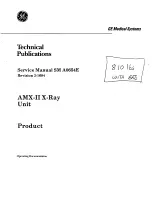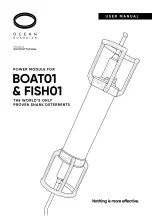
faulted feeder is isolated
G FWD
must be set to be faster than C. Relay G will thus trip first on
FWD
settings,
leaving D to operate to clear the fault. The un-faulted feeder C-E maintains power to the load.
Relays on circuits C and D at the main substation need not be directional to provide the above protection
scheme. However additional directional elements could be mapped to facilitate a blocked overcurrent scheme
of busbar protection.
At A and B, forward looking directional elements enable sensitive settings to be applied to detect transformer
faults whilst reverse elements can be used to provide back-up protection for the relays at C and D.
By using different settings for forward and reverse directions, closed ring circuits can be set to grade correctly
whether fault current flows in a clockwise or counter clockwise direction i.e. it may be practical to use only 1
relay to provide dual directional protection.
2 Out of 3 Logic
Sensitive settings can be used with directional overcurrent relays since they are directionalized in a way which
opposes the flow of normal load current i.e. on the substation incomers as shown on fig. 2.6-4? However on
occurrence of transformer HV or feeder incomer phase-phase faults an unbalanced load current may still flow
as an unbalanced driving voltage is present. This unbalanced load current during a fault may be significant
where sensitive overcurrent settings are applied – the load current in 1 phase may be in the operate direction
and above the relay setting.
Where this current distribution may occur then the relay is set to
Current Protection > Phase Over-
current > 67 2-out-of-3 Logic = Enabled
Enabling 2-out-of-3 logic will prevent operation of the directional phase fault protection for a single phase to
earth fault. Dedicated earth fault protection should therefore be used if required.
Directional Earth Fault
The directional earth fault elements, either measured directly or derived from the 3 line currents the zero
sequence current (operate quantity) and compare this against the derived zero phase sequence voltage (polar-
izing quantity). Chapter 1 of the Technical Manual ‘Description of Operation’ details the method of measure-
ment. The required setting is entered directly as dictated by the system impedances.
Example: Expected fault angle is -45° (i.e. residual current lagging residual voltage) therefore 67G char angle =
-45° derived directional earth elements, 50N and 51N, can be selectable to use either ZPS or NPS Polarizing.
This is to allow for the situation where ZPS voltage is not available; perhaps because a 3-limb VT is being used.
NPS polarizing uses the phase of the NPS voltage and NPS current for directional polarizing but the ZPS derived
earth fault current is still the operating quantity. Care must be taken as the
Characteristic Angle
may
require adjustment if NPS polarizing is used. Once again the fault angle is completely predictable, though this
is a little more complicated as the method of earthing must be considered.
[dw_7SR5_function67SettingExample4, 1, en_US]
Figure 5-36
Earth Fault Angles
Protection and Automation Functions
5.19 67 Directional Overcurrent/Earth Fault
Reyrolle 7SR5, Transformer Protection Device, Device Manual
283
C53000-G7040-C015-1, Edition 11.2019
















































